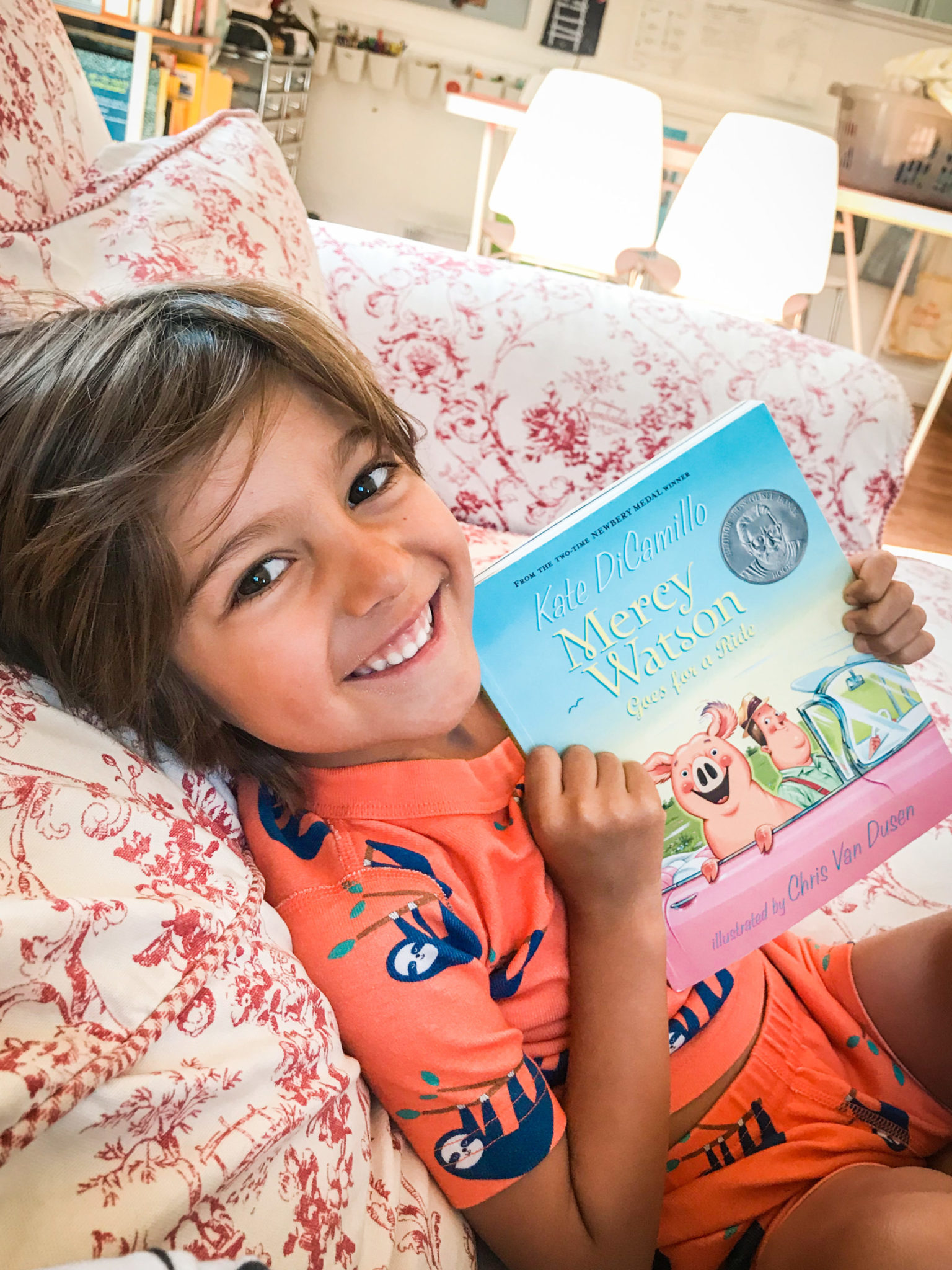My older two children picked up reading fairly quickly. We worked together for a few months, and they were generally interested and engaged for most of the time. I didn’t feel like it required a great deal of motivation either on their part or mine. My third kiddo, however, has been a much more reluctant reader.
He is far more tactile than my older two, and loves to build. You could give him cardboard and tape and he’d be content for days! Because he tends to learn more with his hands, learning to read was less engaging for him, and took a bit more work.
Here are some tips that helped me as I encouraged my child who wasn’t as enthusiastic about learning to read.
Before you dig into these resources, be sure to check out this post on what age to start teaching your child to read, as well as the best books to teach reading.
This post about teaching a reluctant reader contains affiliate links, but all opinions are 100% my own. That means I earn a small commission if you purchase through my link, but doesn’t change your price.
Teaching Your Child to Read Part 3/3:
10 Tips for Encouraging A Reluctant Reader
Don’t Force It
First and most importantly, don’t force it! It’s perfectly normal for some kids to be reluctant readers and to not be as interested as early. That’s okay! There are plenty of kids who don’t learn to read until a little later and who still become fluent and excited readers. If it’s not working, don’t stress – there is zero shame in it being the wrong time. Just put it to the side and try again in a couple of months.
Time Reading Practice Well
If we were in a giant rush to get out the door, and we needed to finish reading practice in 10 minutes flat? Or if everyone needed to get to bed ASAP and we tried to squeeze reading practice in? It wasn’t going to work very well. Teaching your child to read is usually most successful when you’re not under time pressure, and when you can take your time and enjoy the process.
Give The First Word or Two
My reluctant reader often has a difficult time just getting started. He does fine once he gets going, but starting the task somehow feels either challenging or overwhelming or just plain uninteresting. If I can overcome the hurdle of getting him started, things often go more smoothly.
So a lot of times, I’ll prompt him with the first word or two if he’s not starting right away. This directs his attention immediately to the page and helps him focus on the task. Then he typically jumps right in with the next word and keeps going.
Reward Reading with Reading
Do you know what the best reward for reading is? More reading. But not from your child; from you! Most kids love being read to, and it’s sweet getting to curl up with a parent. This can be especially connective if you have other kids – special time with just you can be really motivating for a reluctant reader.
During this time, read what THEY want to read – whether it’s a chapter book (this was a huge hit) or picture book (an all-time favorite) or the back of a DVD case or an ebook on a screen. Whatever gets them excited about reading is great.
Reading Time Incentives for a Reluctant Reader
If you’re having trouble getting your child to come participate in reading practice, try coupling reading practice with something they love. You could try making certain incentives available only during reading practice time. For instance, you could have a special blanket or stuffed animal, a small snack, or special music. It could even be something like getting to stay up late with a parent if that works for your family. Consider what motivates your child and see if you can incorporate that into your reading time.
Choose Material Your Reluctant Reader Will Enjoy
Does your child love dinosaurs? Unicorns? Storms? Sharks? Ships? Are there some on-level books you could incorporate from their favorite genres?
Even if you’re following a set curriculum, can you read your child a book after and have them read just the words they recognize as you come to them? Recognizing that being able to read allows them to connect with ideas they love can be super motivating.
Set a Time Limit
It’s tempting to keep going until you finish a lesson or a page or a story. And sometimes, your child is even asking to continue! While that can sometimes go well (I don’t typically want to deter my kids from reading!), sometimes it can backfire. Because by that time, my child is mentally tired and gets frustrated more easily, tainting the earlier successful experience. I’d rather go out on a high note.
In the very beginning, we tend to practice for even just 5-10 minutes. Short and sweet for a simple success or two. As we progress, we work up to 20 minutes.
Have Your Reluctant Reader Read Aloud to Someone Other Than You
Does your child love to perform? If so, consider having them read to someone other than you. Is there a sibling around? Or perhaps a grandparent on a video call? Or perhaps even just a different caregiver than the one who usually teaches reading? Try having your child read to them. It’s fun and motivating to read to someone new and to feel confident and capable.
Try A New Location
Are the LEGOs too distracting? Or does your child want to jump on the bed? Try switching up the location. You could try going in a “reading tent” or even taking a picnic blanket over to the park with popsicles for a special parent-child date.
Point Out Progress
It can be super motivating to see the hard things you’ve already accomplished. Maybe you can track the books you’ve read or the lessons you’ve completed. Try making a big chart to hang up and color in, or perhaps add to a pennant garland for each completed one.












[…] Teaching Your Child To Read: Tips for Encouraging a Reluctant Reader […]
[…] 10 Tips for Encouraging a Reluctant Reader […]
[…] Related: Tips for Encouraging a Reluctant Reader […]
[…] Teaching Your Child To Read: Tips for Encouraging a Reluctant Reader […]
[…] Teaching Your Child To Read: Tips for Encouraging a Reluctant Reader […]
[…] Tips for Encouraging a Reluctant Reader […]
[…] Tips for Encouraging A Reluctant Reader […]